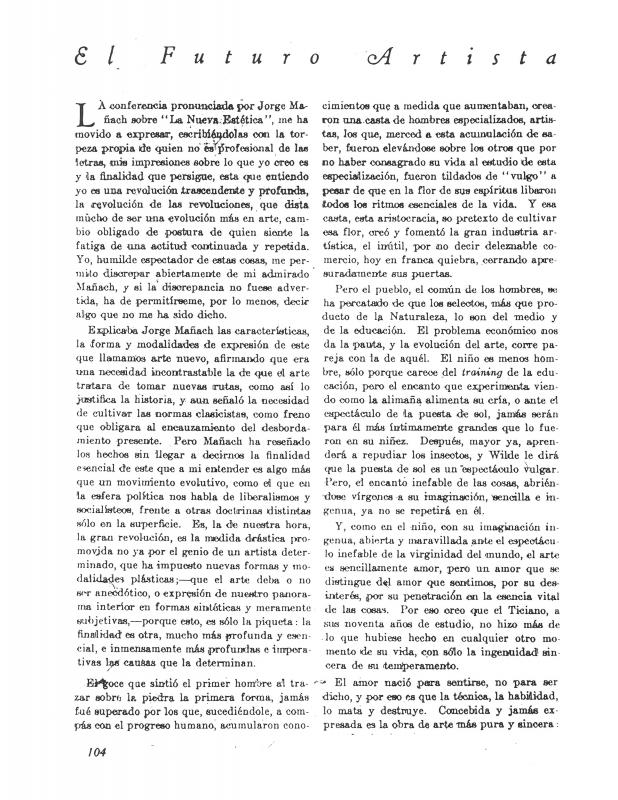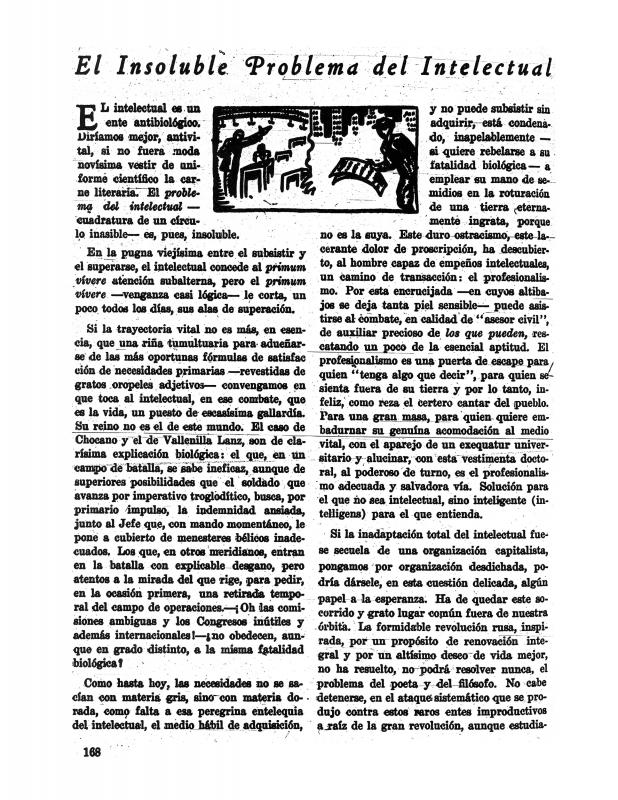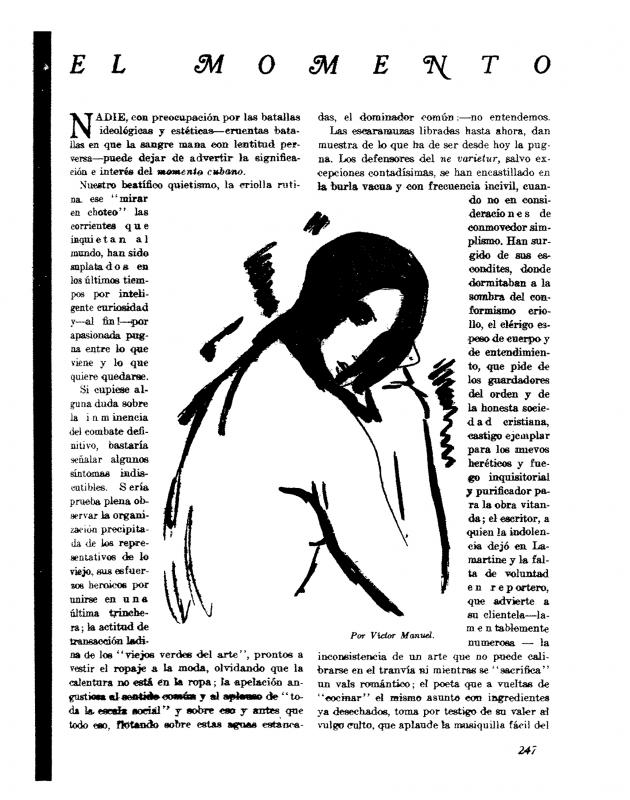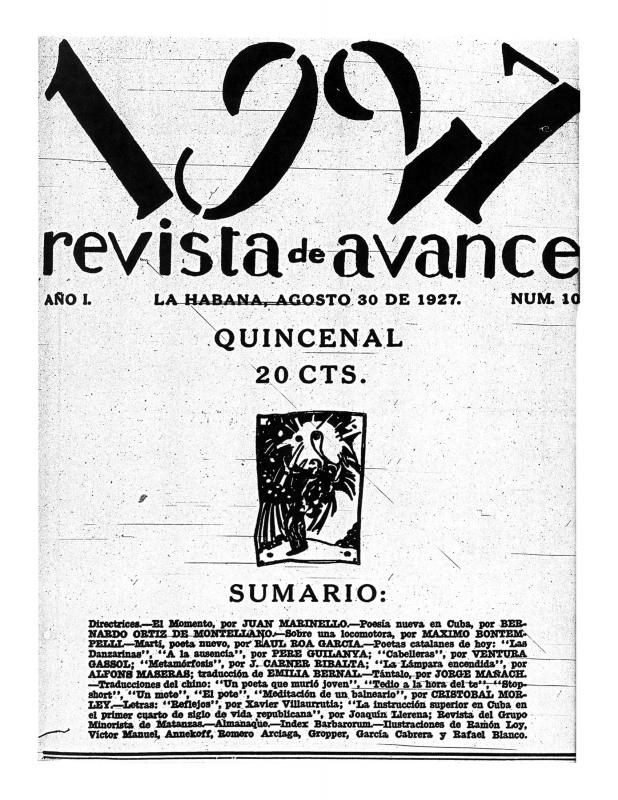Rafael Blanco (1885–1955) was a distinguished Cuban caricaturist whose work developed during the period of the Cuban Republic. After graduating from the San Alejandro School, Blanco participated in numerous exhibitions and salons in Havana. In the course of his travels to New York and Mexico, the artist created several drawing series. Blanco is best known for his political caricatures, including “The Cuban Cabinet,” and portraits of his artist and intellectual friends. Some of these appeared in the pages of Revista de avance; for example, one caricature of Jorge Mañach and another of Juan Marinello. It was said about Blanco that he needed only three strokes to record the features that were characteristic of a person. He was considered one of the most important exponents of drawing and political caricature in Latin America, although his work has not been sufficiently studied or recognized. In fact, the inclusion of Blanco’s drawings in the exhibition of new art signified a reassessment of this art practice. According to tradition at the academy, the drawing was considered one step in the process of executing a work, lacking any value in and of itself. This belief came to be questioned by the avance editors, who printed a fair number of drawings and prints in the journal, therefore promoting an appreciation of these practices as independent art genres. [For other essays and texts published in Revista de avance, see the following in the ICAA digital archive: “Índice del Tomo I (Números 1 al 12 inclusive)” (anonymous) (doc. no. 1300106); by Martí Casanovas “Almanaque” (doc. no. 1299709), “Almanaque: Exposición Gattorno” (doc. no. 1298711), “El capitalismo y la inteligencia” (doc. no. 1299384), “Nuevos Rumbos: La exposición de ‘1927’” (doc. no. 1280155), and “Pierre Flouquet” (doc. no. 1299881); “[El arte nuestro debe ser instintiva o intuitivamente americano...],” by Víctor Andrés Belaúnde (doc. no. 832310); “[Basta con que revele una honda...],” by Carlos Préndez Saldías (doc. no. 832258); “Causerie sobre el Salón de Bellas Artes,” by Adia M. Yunkers (doc. no. 1298799); “[Creo que el artista americano...],” by Ildefonso Pereda Valdés (doc. no. 832328); “Diego Rivera,” by Alejo Carpentier (doc. no. 1299962); “Eduardo Abela: pintor cubano,” by Adolfo Zamora (doc. no. 1280283); “El futuro artista,” by Eduardo Abela (doc. no. 1299789); by Juan Marinello “El insoluble problema del intelectual” (doc. no. 1299897), and “El momento” (doc. no. 1125671); “El prejuicio en el ritmo intelectual de las épocas,” by Francisco Ichaso (doc. no. 1299741); “El problema internacional de Centro América y Cuba,” by Fernando de los Ríos (doc. no. 1300090); “La cuestión del negro” (anonymous) (doc. no. 1280299); “La lección de Juan Gris,” by Juan Gris (doc. no. 1299946); “Marrozzini y la mediocridad: notas sobre declaraciones de Luigi Marrozzini,” by Lorenzo Homar (doc. no. 861634); “Martí: Poeta Nuevo,” by Raúl Roa García (doc. no. 1300003); “Nacionalismo y Costumbrismo,” by Severo García Pérez (doc. no. 1300058); “Nacionalismos en América,” by Eugenio d’Ors (doc. no. 1299757); “Nota de los 5—2,” by Jorge Mañach et al. (doc. no. 1299930); “Programa de criolledad,” by Félix Lizaso (doc. no. 1125414); and “Vértice del gusto nuevo,” by Jorge Mañach (doc. no. 832383)].












